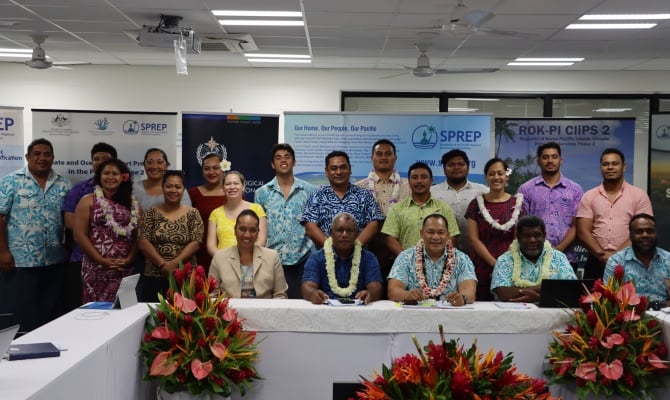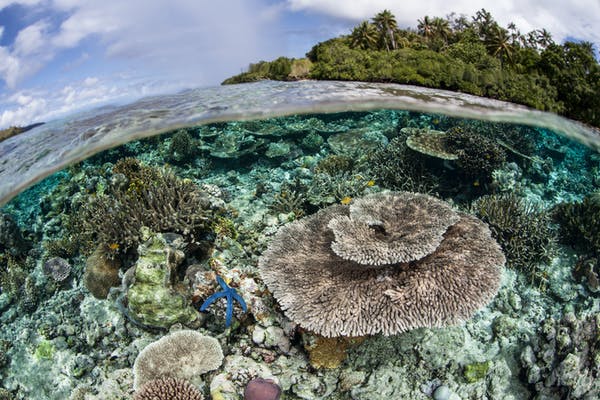Over decades, we’ve watched with alarm as the intensity of storms increases, writes Oxfam’s Ilisapeci Masivesi. We need countries to step up at COP26.
In April 2020 as the rest of the world was battening down against COVID-19, communities across Fiji were battening down against a more immediate threat: a category-5 cyclone.
But Cyclone Harold was no ordinary storm. I woke in the early hours of the morning to the screams of my 11-year-old daughter, Hadassah, as a terrifying whirlwind tore off part of our roof.
This was not the first cyclone I’ve experienced. But it was the first time we saw a cyclone and a whirlwind coincide; the first time we tried to rebuild amidst a growing COVID-19 outbreak; the first major storm my daughter will remember.
But I’ll never forget the first cyclone my daughter lived through. At the age of three, living in Samoa, she was carried through our home by floodwaters after nearby riverbanks were breached. A screen door was all that stopped my little one from being swept away.
Here in the Pacific, the climate crisis has arrived. Over decades, we’ve watched with alarm as the intensity of storms increases.
Public conversation in Australia ahead of the upcoming UN Climate Change Conference (COP26) has revolved around one question: will or won’t the Australian government commit to a net zero by 2050 emissions target. For us in the Pacific, already experiencing the impacts of this crisis, it’s not targets set decades in the future that are top of mind, but the action and support we need to adapt now.
Climate finance will be high on the agenda in Glasgow. The United States, the United Kingdom and Canada have already committed to doubling their commitments this year, with the US alone committing to US$11 billion annually by 2024. Australia will be expected to step up.
The calls for Australia to follow suit are growing louder, with a coalition of leading environmental, international development and community groups urging the government to match that ambition and increase its climate finance to $3 billion (US$2.2 billion) over five years ahead of COP26.
It’s the first step in a detailed roadmap published in a new report, Fairer Futures, showing how Australia can do more for its neighbours here in the Pacific and in other at-risk regions on the front-line of the climate crisis.
This is a matter of human rights and climate justice: Oxfam analysis has shown that the energy consumption of Australians produces around eight times as much carbon emissions each year as Pacific Islanders.
We are the ones left dealing with the consequences of Australia’s rampant consumption and inaction.
So what difference could more funding from countries like Australia make? Climate finance is critical to supporting countries like Fiji to adapt to the impacts of climate change we are already seeing.
These impacts haven’t been more real, indeed existential, for anyone than the residents of four low-lying coastal communities, which have already had to relocate due to rising sea levels.
For about a decade, villages vulnerable to inundation of tides, bigger storm surges and coastal erosion have been planning for the future. They’ve considered the massive logistics and emotional upheaval that comes from abandoning your home, and creating a new one from scratch somewhere safer.
It’s not just the houses people are having to leave behind. It’s a way of life.
It’s a monumental task with consideration given to concerns such as relocation of deceased family members, who are buried near their homes.
There are roughly 80 more communities already earmarked for relocation here in Fiji alone. And that’s just one piece of a very large global puzzle of impacts that need to be planned for and adapted to. And that’s why ambitious climate finance pledges, alongside bold emission reduction targets, are critical.
For my family and I here in Fiji, as we prepare for the next cyclone season that is almost upon us, recovery from Cyclone Harold remains ongoing. The government had to halt some of the rebuilding work to focus on the other battlefront of COVID-19.
For people such as my daughter, the psychological scars remain. Now, whenever she hears thunder, she rushes into my room and hides under the bed. That fear has left its mark, and it will remain with her for the rest of her life.
This story was produced by Ilisapeci Masivesi (Oxfam’s Climate Justice Lead in the Pacific and based in Fiji), published at SBS News on 24 October 2021, reposted via PACNEWS.




